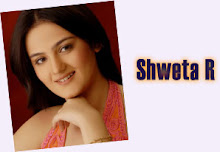WHERE DOES IT HEAD: - To a certain extent like Farah Khan (who made Om Shanti Om), Zoya Akhtar too draws upon her insight into the Hindi film industry and gives us a gem called Luck By Chance. This film is an insider's perspectives into Bollywood right from frame one. A ten on ten for the opening credits sequence, which takes you behind the arc lights and the glamour of showbiz. Followed by the credits come Sona (Konkana Sen) who arrives in Bombay with her dreams of becoming a film star. Wide eyed but ambitious, she does whatever it takes, to make it. She lives on her own in a rented residence - a luxury for most in this full of life city and spends her time with a diverse crew of loyal friends whose lives are also intertwined with Bollywood, each one in search of a bigger dream. Vikram (Farhan Akhtar) the protagonist has just moved to the City leaving the comforts of his parents Delhi Home. He is a mover, he is used to getting what he wants and is smart enough to know when to demand it and when to manipulate it. He is young and handsome, and full of promise. Sona begins to enjoy Vikram's attention and affections; they develop a romantic relationship. Rolly (Rishi Kapoor) is a successful though superstitious producer who only works with the biggest stars. He is making a prospective blockbuster launching the nubile Nikki, the 18-year-old daughter of 70's superstar, Neena (Dimple Kapadia). The hero of the film, Zaffar Khan (Hrithik Roshan), is Rolly's favorite superstar. He was launched by Rolly and went on to become a huge draw at the box office. The wheels of fate indeed continue to spin favorably for Vikram, as elsewhere in the industry, havoc spreads on the sets of producer Rolly's new film. Vikram is called in for an audition and uses this opportunity to the fullest. The film is about a slice of Bollywood life, in which luck plays a huge role. Luck By Chance is a current tale set in a world desperate to escape its own reality. THE RIGHT: - The highpoint of the film are its performances. There are some lovely little moments like the star daughter in a super short skin-tight outfit struggling to touch her producer's feet without splitting a closure. But what makes Luck By Chance compelling, is the layers beneath the laughs. Both Farhan Akhtar and Konkona Sen are complete naturals before the camera, just as Rishi Kapoor and Dimple Kapadia prove that vintage never does lose its flavour, does it! The taunts are gentle, the tone is warmhearted, yet firm. It shows that showbiz is a clinically cruel place. This is a world where fortunes change every Friday and as a dance director tells Sona, once you are successful, you belong to no one. This is a world in which privately, even a successful producer like Rolly weeps because a superstar whom he created, won't return his calls.But most importantly, the characters are completely real: lively and flawed, even as the end is bracing
THE WRONG There are parts of Luck by Chance that may not translate to outsiders and in long stretches, the film gets slow and clunky. But, you've got to cruise along patiently, since success and self-identity are things that cannot be attained in a split second. Not in reel or real life.
WHERE TO HEAD: - Watch Farhan Akhtar and Konkona Sen grow from nobody to somebody in an industry which is harsh, brutal, nasty and non-compromising, and you are sure to get your paisa vasool
